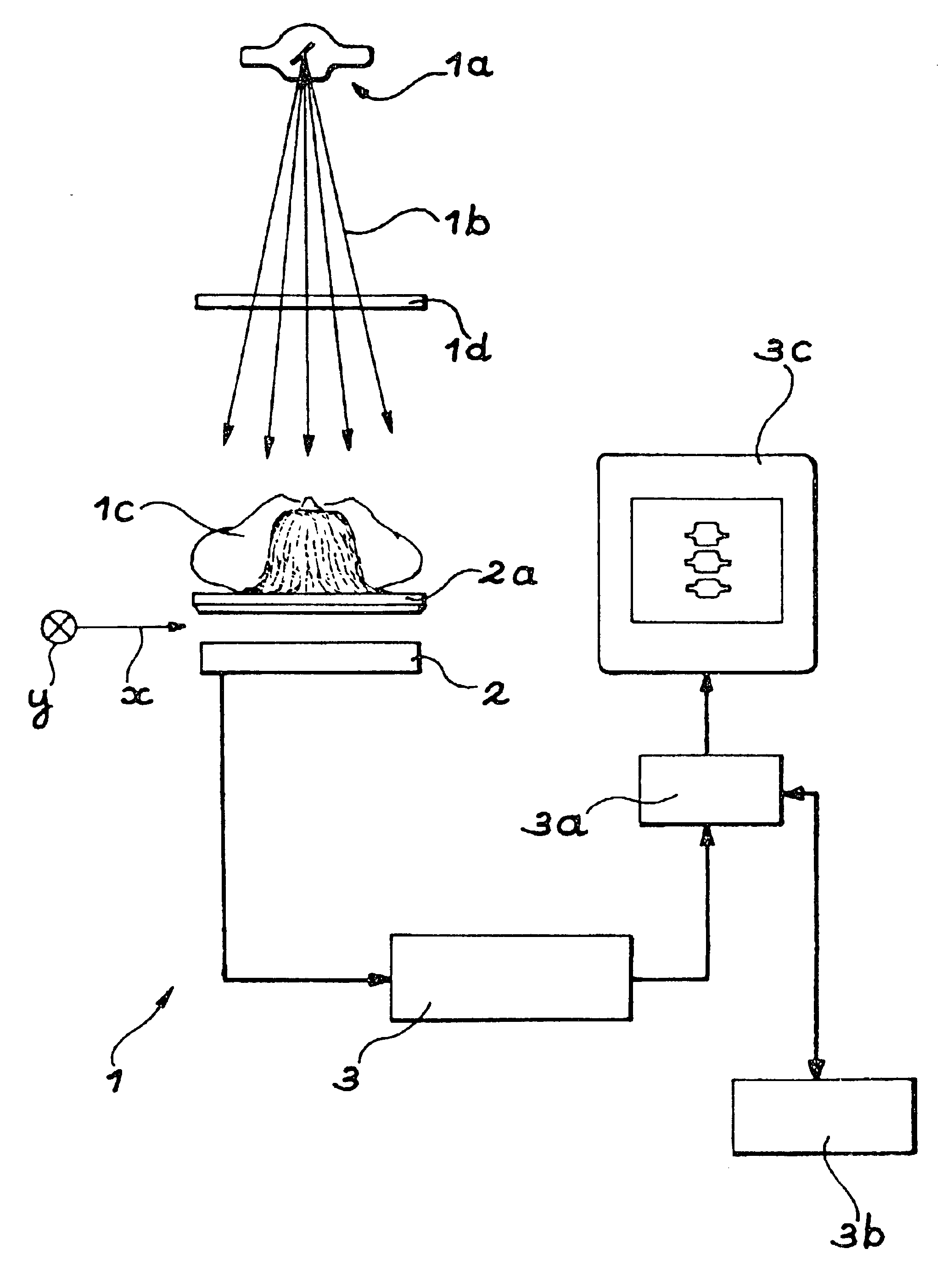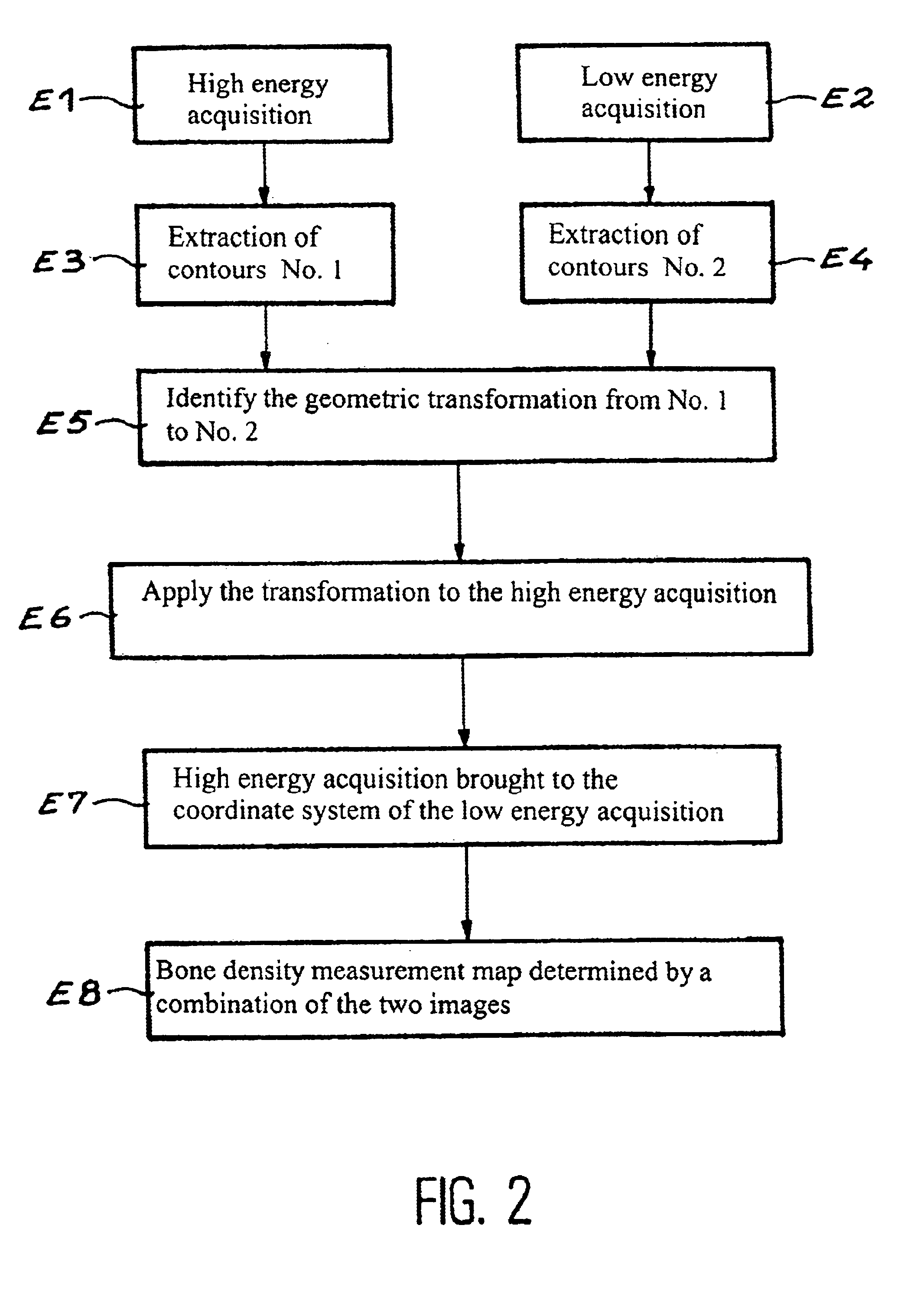Method for using a bone densitometry system, with dual-energy x-radiation
a densitometry and dual-energy technology, applied in the field of bone densitometry systems, can solve the problems of limiting the geometric deformation related to the size, and it is more difficult to implement cone beam systems than it is to use the other two families of "cone beam" type systems that are commercially availabl
- Summary
- Abstract
- Description
- Claims
- Application Information
AI Technical Summary
Benefits of technology
Problems solved by technology
Method used
Image
Examples
Embodiment Construction
FIG. 1 shows a bone osteodensitometry system 1 that comprises an X-ray source la that can return a cone beam 1b of X-rays to the body of a patient 1c who is being examined. This source 1a can emit X-radiations corresponding to two different energy levels. These two levels are used to obtain two separate images of the patient.
A removable filter 1d can be inserted between the source 1a and the patient 1c and is used to improve the spectral qualities of the beam.
The system 1 also comprises a two-dimensional detector 2 that is very diagrammatically shown as a cross-section in FIG. 1 and is designed to detect X-rays emitted by the source after passing through the patient 1c. This detector 2 is parallel to a plane defined by two orthogonal directions x and y.
This patient is placed on an appropriate support 2a, for example a bed, that is transparent to X-rays. In the example shown in FIG. 1, the source 1a (provided with the filter 1d if required) is placed above the patient resting on the ...
PUM
 Login to View More
Login to View More Abstract
Description
Claims
Application Information
 Login to View More
Login to View More - R&D
- Intellectual Property
- Life Sciences
- Materials
- Tech Scout
- Unparalleled Data Quality
- Higher Quality Content
- 60% Fewer Hallucinations
Browse by: Latest US Patents, China's latest patents, Technical Efficacy Thesaurus, Application Domain, Technology Topic, Popular Technical Reports.
© 2025 PatSnap. All rights reserved.Legal|Privacy policy|Modern Slavery Act Transparency Statement|Sitemap|About US| Contact US: help@patsnap.com



